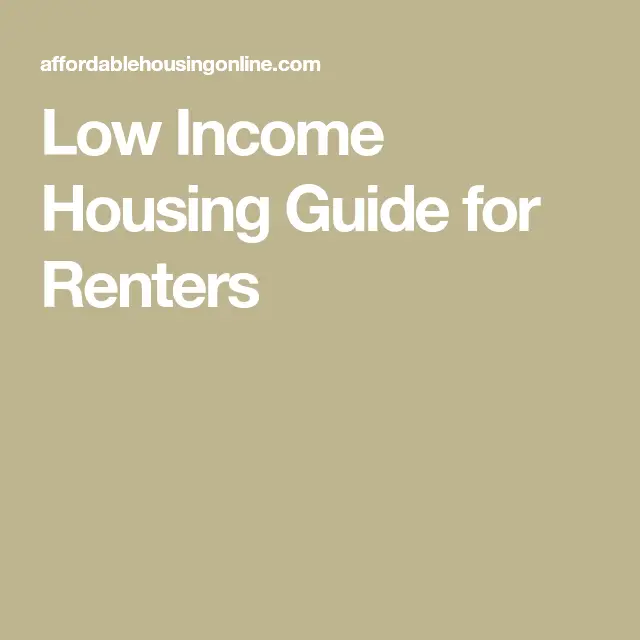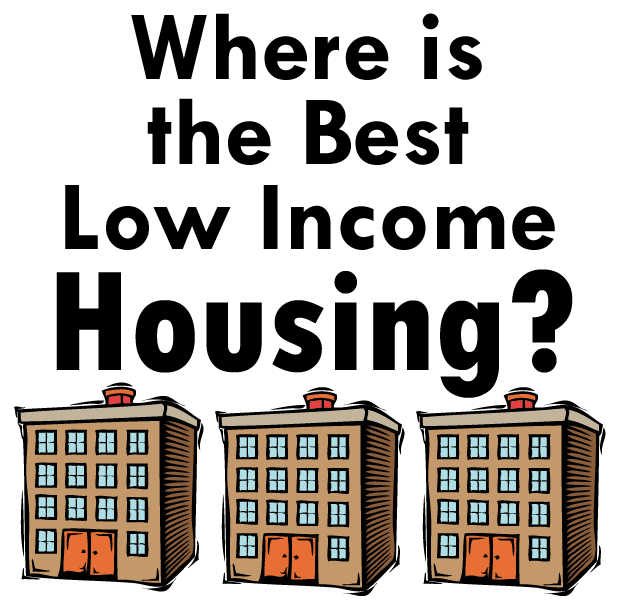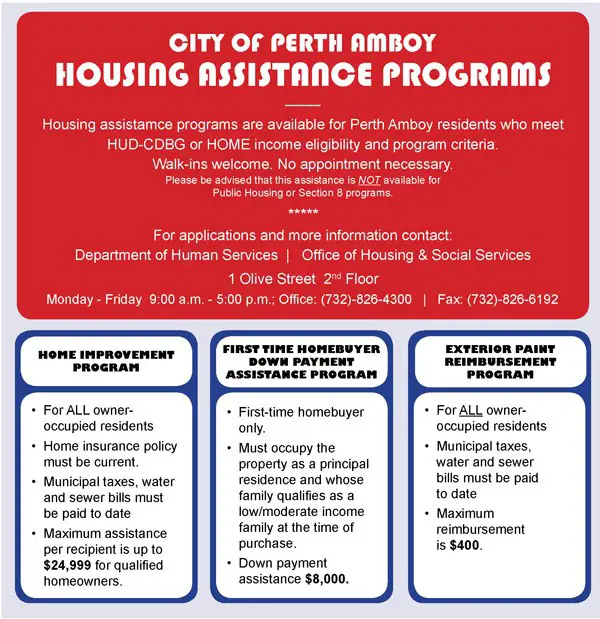Free Government Housing Assistance For Low Income Families
Subsidized housing, housing vouchers, and public housing programs or Housing assistance for Low-income families, seniors, and people with disabilities benefit from Housing Assistance programs by finding affordable private or government-owned housing. The program houses more than 1.2 million people. Housing Choice Voucher Programs provide vouchers for renting approved properties. Those who receive the subsidy are required to pay no more than 30 percent of their income. About 2.2 million tenants are served by local agencies. This is the former Section 8 program. A few families are able to purchase a modest home using a Public Housing Agency coupon.
Programs offered by LIHEAP help low-income households with their energy costs and weatherization. Provides block grants to states totaling $3.4 billion.
Grants For Low Income Housing
Whether you need money to pay for property or real estate now is the time to take action if you are looking for grants for low income housing. Low interest loans, down payment assistance and several other opportunities are available through private foundations and the United States federal government in support of low income housing grants to individuals and charities who help them.
Sponsored by the U.S. Department of Housing and Urban Development, several resources are available at the consumer level in addition to those seeking low income housing grants. Financed through grants for low income housing are special federal government programs designed to help John Q. Public with almost every conceivable need from existing repair to new home purchase. Select private and corporate foundations also offer help with grants for low income housing.
The Very Low-Income Housing Repair program offered by the federal government provides loans and grants for low income housing to homeowners in rural areas to repair and improve existing homes, or to remove health and safety hazards which may have accumulated over the years.
Also offering grants for low income housing are the HUD Community Development Block Grant and Entitlement Communities Grants programs. Under this federal program, grants for low income housing are offered for the purposes of:
Free Meal Assistance For Low Income Families
Supplemental Nutrition Assistance cards allow eligible individuals to buy food at designated grocery stores and farmers markets using a debit card, which is similar to a debit card. Food stamps are provided by the SNAP program to 47.6 million people, or 23 million households. On average, participants receive 133 dollars a month.
The Special Supplemental Food Program for Women, Infants, and Children is a food stamp program for nursing mothers and young children in addition to SNAP. In addition to food and coupons, WIC provides education and referrals to help pregnant women and children up to age six. In 2017, there were 7.7 million WIC recipients each month.
Children who are in school can take part in the Child Nutrition Program, which provides free or reduced-cost meals to 30 million children. You can apply here for SNAP
You May Like: Government Grants For Rental Assistance
The National Housing Strategy
In November 2017, the Government of Canada announced its National Housing Strategy . A significant part of the NHS involved renewing the expiring federal-provincial support for housing programs. On April 30, 2018, the Province of Ontario and the Canada Mortgage and Housing Corporation signed a 10-year bilateral agreement that created three new federal-provincial housing programs. The purpose of the new programs is to preserve the expiring federal-provincial housing funding and expand the supply of social and affordable housing in Ontario. As a result, beginning in 2019-20, the Provinces housing programs spending began to shift from legacy programs to the three new programs under the NHS.
Under the NHS agreement, the Province and federal government have committed to spend $4.0 billion through the Provinces housing programs from 2019-20 to 2027-28. The $4.0 billion NHS spending commitment consists of $2.9 billion of federal support and $1.1 billion of direct provincial spending through the three new housing programs.
Table 4-1: Federal and provincial spending under the NHS by program
Program
Spending will increase annually, with 50 per cent of the NHSs $4.0 billion in funding occurring after 2024-25.
Figure 4-2: Projected spending by NHS program, 2019-20 to 2027-28
Free Financial Assistance For Low Income Families From Government

Supplemental Security Income Program Adults with disabilities and older adults are eligible for Supplemental Security Income . SSI provides food, clothing, and shelter for the elderly, blind, and disabled. Approximately 8.4 million people receive $536 per month on average. Seventy-three percent of these are blind or disabled.
Read Also: Does The Government Pay For Family Caregivers
What Is Low Income
Households are considered poor if their total household income is insufficient to cover their members basic needs, such as clothing, education, transportation, etc. Many people living in poverty lack access to information that is crucial to making life decisions. This reduces their net income, makes it difficult for them to access social services or employment opportunities, and exposes them to corruption and exploitation in disproportionate ways. So who is a low-income person? That is explained below.
Housing Programs Spending Forecast
Based on a review of expiring funding agreements and the new funding commitments under the NHS, the FAO projects that the Provinces annual spending on housing programs will increase from $701 million in 2018-19 to $811 million in 2027-28. Annual spending is projected to be lower than 2018-19 levels until 2024-25, as new funding from NHS programs will not make up for lost funding under expiring agreements. Starting in 2024-25, annual spending on housing programs will be higher than 2018-19 levels as increasing funding under the NHS programs begins to exceed lost funding under expired agreements.
Figure 5-1: Ontario housing programs spending, historical and projected, 2014-15 to 2027-28
Note: Actual spending from 2014-15 to 2019-20. Planned spending from 2020-21 to 2027-28.Source: FAO analysis of information provided by MMAH Government of Ontario, Community Housing Renewal: Ontarios Action Plan Under the National Housing Strategy and the CMHC-Ontario Bilateral Agreement under the 2017 National Housing Strategy.
Overall, from 2019-20 to 2027-28, annual spending on the Provinces housing programs will average $696 million. This is significantly lower than average annual spending by the Province from 2014-15 to 2018-19, at $856 million per year.
Don’t Miss: Credit Cards For Government Agencies
How Do I Qualify For Hud Housing
Surely HUD is a government program in the United States of America to make sure the low-income people can get affordable housing as government assistance for housing. You may easily qualify for HUD housing when you have low income defined by the HUD low-income guideline, you are elderly, and have a family member with a disability. You are a US citizen or have eligible immigration status. These are eligibility criteria to qualify for housing assistance.
Low Income Housing Tax Credits
The largest source of federal support for the creation and preservation of dedicated affordable housing is administered by state and local housing finance agencies based on regulations issued by the U.S. Treasury Department. The Low Income Housing Tax Credit program is an indirect subsidy program that provides an incentive for private companies to invest in affordable housing through a dollar-for-dollar reduction in federal income tax liability. Investors receive the credit over a 10-year period, and projects financed with LIHTC equity must remain affordable for a period of at least 30 years . Since the program was created in 1986, nearly 3 million LIHTC units have been placed in service in more than 45,000 projects.
Read Also: How To Buy Swiss Government Bonds
Home Investment Partnerships Program
The HOME program is a block grant provided by the federal government directly to large cities, towns, or counties and to states . HOME funds can be used for a variety of housing-related activities, including home purchase and rehabilitation assistance, site acquisition or improvement for the development of affordable rental or owner-occupied housing, and tenant-based rental assistance. 60 percent of funds are distributed by formula to cities, towns, counties, and consortia of local governments, and the balance goes to states, which can fund projects directly or issue sub-grants to local jurisdictions that are not eligible for their own direct allocation. HUDs allocation formula is based on a range of factors including the inadequacy of the local housing supply, the incidence of poverty, and fiscal distress, among others.
Homeless Veterans Assistance Center
Veterans are the true hero of the country. At this time, they may have difficulties in finding affordable housing. In many cases, they may have to go through a dire condition like homelessness. So homeless veterans and their families can get safe and affordable housing by contacting VA homeless Veterans Assistance Center. There are more programs under this center such as regaining employment, safe housing, health care, and mental health services.
When you are going to apply for this program, you must be a veteran or dependent veteran. At the same time, you should be homeless or you are supposed to be homeless very soon. You may directly contact and visit this center for the assistance provided under this program.
Don’t Miss: Government Grants For Female Entrepreneurs
Who Receives Rental Assistance From The Federal Government
Congress provided assistance for the ERA program through two different laws passed in December 2020 and March 2021. A total of 3.8 million payments were made to eligible households in 2021 with some households receiving assistance from both ERA1 and ERA2. The other three main rental assistance programs served 4.4 million households. Tenant-based assistance served 2.4 million households, project-based assistance served 1.2 million, and 825,000 households were in public housing.
The demographic profile of those households differs from that of the U.S. population as a whole. For example, while two-thirds of U.S. households are categorized as White, not Hispanic, only one-third of rental assistance households fall into that category. In addition, while only 10 percent of U.S. households are composed of a single father or mother, almost one-third of rental assistance households have only one adult living with children.
Search By Type Of Program

There are three main types of affordable rental housing that are supported by HUD:
- Privately owned, subsidized housing in which landlords are paid by the government to offer reduced rents to low-income tenants. Search for an apartment and apply directly at the rental management office.
- For complaints about subsidized housing, call the Multifamily Housing Complaint Line at .
If you have trouble contacting your local public housing agency, contact your local HUD field office for help.
If you’re a landlord, learn how you can participate in the Housing Choice Voucher Program.
Read Also: Government Student Loans For Graduate School
Qualified Opportunity Zone Designations
The Opportunity Zones tax incentive, created by the Tax Cuts and Jobs Act of 2017, was designed to spur investment in nearly 9,000 economically distressed census tracts. The program provides three types of tax incentives for investors: temporary deferral, step-up in basis, and permanent exclusion. All types reduce or defer the amount of taxes investors must pay for their capital gains.
Opportunity Funds provide investors the chance to put that money to work rebuilding the low- to moderate-income communities through pooled investments. The fund model enables a broad array of investors to pool their resources in Opportunity Zones, increasing the potential for the scale of investments going to underserved areas.
In developing their local housing strategies, cities, towns, and counties will need to determine how best to coordinate all of the different federally funded housing activities, as well as any initiatives funded at the state or local level. With many of these programs being implemented by different agencies, this can be a challenging task, but it is nonetheless an important one for ensuring the jurisdictions housing needs are addressed in a comprehensive and strategic manner. Cities, towns, and counties will also want to consider federal funding availability and requirements to identify gaps that could benefit from locally funded initiatives.
Who Is Eligible For Rental Assistance
Households must have incomes below certain levels 50 percent of the local median income for tenant-based assistance and 80 percent of the local median income for project-based assistance, public housing, and the ERA program. Under ERA though, priority is given to households below 50 percent of the local median income or those who have been unemployed for 90 days. For the other three large programs, a certain amount of support is reserved for extremely low-income households, which are defined as those earning less than 30 percent of the local median income. However, rental assistance is not an entitlement program, meaning that meeting the eligibility requirements does not guarantee that a household will receive benefits.
Also Check: Temp Agency For Government Jobs
How Will They Determine The Amount Of Rent To Be Paid
Rent is determined based on your family’s gross annual income after deductions. Regulations allow the exclusion of the following from the annual income:
- $480 for each dependent.
- $400 for elderly family members
- $400 for disabled family members
- Additional medical deductions if the head of household has a disability or is elderly.
Once this final total is reached, your rent will be the highest of the following amount:
- 30% of your monthly adjusted income
- 10% of your monthly income,
- A minimum rent of $25 to $50 as set by the housing authority.
Public Housing Operating Fund And Capital Fund
Public housing is affordable housing that is owned and operated by local public housing agencies. More than 1 million households and 2.6 million residents live in public housing, most of whom have extremely low incomes. Nearly 40 percent of households in public housing are families with children. All residents must have incomes that do not exceed 80 percent of the area median income at the time of admission, and at least 40 percent of new public housing residents each year must be extremely low-income, with incomes that do not exceed the higher of 30 percent of the area median income or the federal poverty level. Residents generally make contributions toward rent and utilities equal to 30 percent of their income, their welfare shelter allowance, or a minimum rent established by the public housing agency of up to $50 . Alternatively, residents may choose to pay a flat rent that does not vary with income.
You May Like: Data Governance And Risk Management
Earned Income Tax Credit
Families with at least one child are eligible for the Earned Income Tax Credit. Their income must be less than $51,567 per year in order to qualify. A total of 63 billion dollars worth of credits were received by more than 27 million people in 2012. Approximately 2,335 dollars per taxpayer were received. Sixty-five million people, half of them children, benefitted from the EITC. The program costs just 1% of what it costs to administer.
Bdevelopment Of This Report
The Financial Accountability Officer accepted a request from a member of the Legislative Assembly to undertake the analysis presented in this report under paragraph 10 of the Financial Accountability Officer Act, 2013.
Key Questions
The following key questions were used as a guide while undertaking research for this report:
- How has the Provinces housing program expense forecast changed from the 2018 Ontario Budget to the 2019 Ontario Budget?
- What program changes have been made to achieve the 2019 budget housing program expense forecast?
- Have the 2019 budget program changes affected funding from the federal government and municipalities?
Methodology
All dollar amounts are in Canadian, current dollars unless otherwise noted.
About this document
Graphic Descriptions
Region
Footnotes
Don’t Miss: City Of El Paso Government Jobs
Hud Public Housing Program
HUD public housing program is one of the available programs for low-income people who cannot afford to house. This comes as government assistance for housing for low-income and eligible families. There are different sizes and types such as single-family houses to high-rise apartments for elderly families as well.
Public housing is surely for low-income families and individuals. There are income guidelines, and you need to know your eligibility on your annual gross income. Additionally, you should be U.S. Citizen and also need to have eligible immigration status. Under this program, your previous rental history is checked, and you are required to provide references. Then the Public Housing Agency will check out your rental history with the help of references to make sure you are a good tenant. If there is an issue of bad rental history, you may be denied this assistance.
So you may contact the HUD web portal for the application process. surely you should get to know HUD public housing program and other related information so that you can go the right way to get housing assistance from this government program.
The Federal Governments Support For Low

The federal government spent $90 billion on housing assistance 2021, an increase of almost 70 percent from the preceding year, largely due to legislation enacted in response to the coronavirus pandemic. Four programs that provided rental assistance to low-income households accounted for 85 percent of the spending . Here are some details on those four programs and the individuals served by them:
Aside from the four programs above, the federal government spent an additional $14 billion in 2021 on other programs including those targeted to the elderly, people with disabilities, and rural renters.
Also Check: Is Government Auction Com Legit
